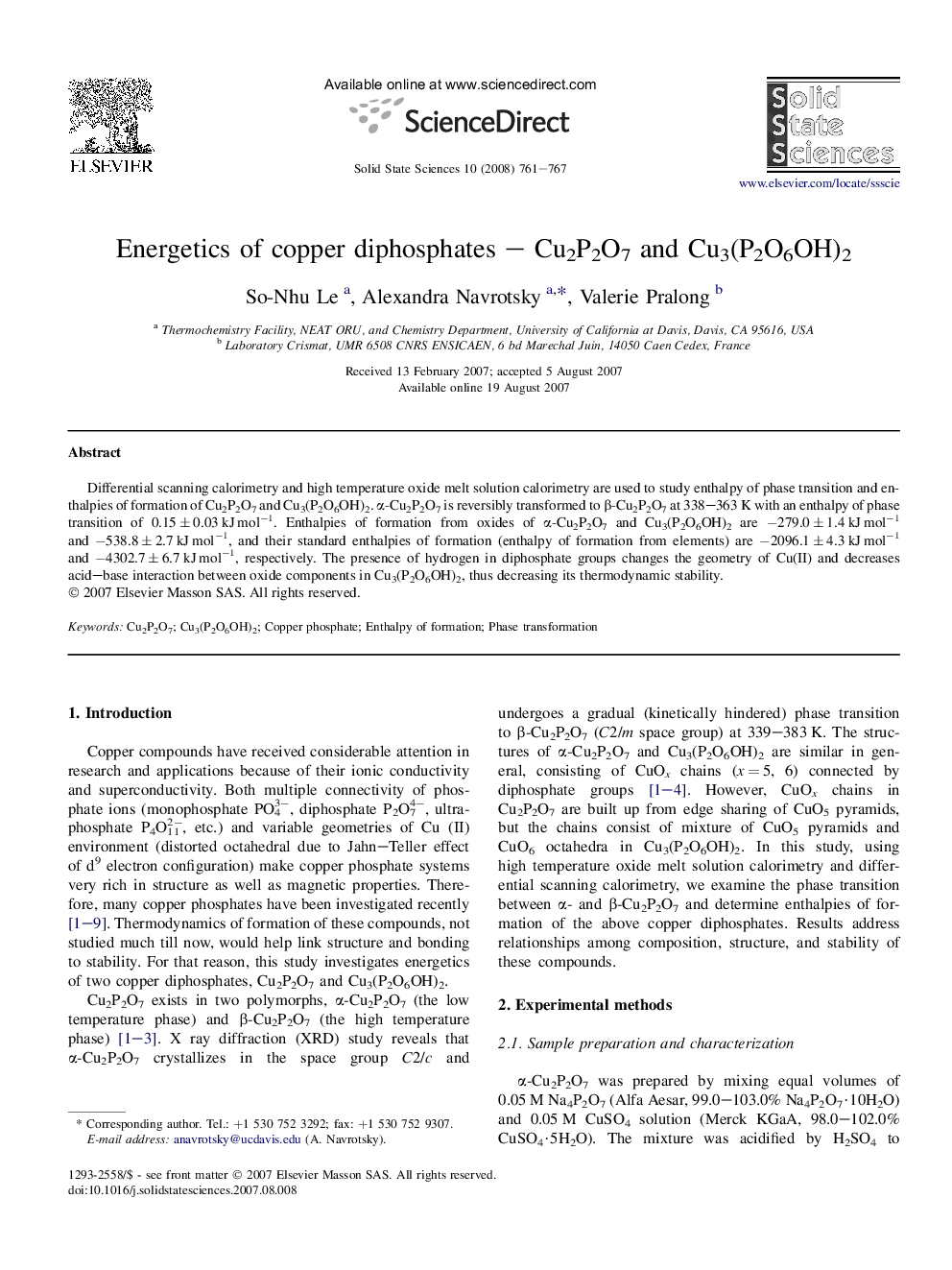| کد مقاله | کد نشریه | سال انتشار | مقاله انگلیسی | نسخه تمام متن |
|---|---|---|---|---|
| 1506289 | 993788 | 2008 | 7 صفحه PDF | دانلود رایگان |

Differential scanning calorimetry and high temperature oxide melt solution calorimetry are used to study enthalpy of phase transition and enthalpies of formation of Cu2P2O7 and Cu3(P2O6OH)2. α-Cu2P2O7 is reversibly transformed to β-Cu2P2O7 at 338–363 K with an enthalpy of phase transition of 0.15 ± 0.03 kJ mol−1. Enthalpies of formation from oxides of α-Cu2P2O7 and Cu3(P2O6OH)2 are −279.0 ± 1.4 kJ mol−1 and −538.8 ± 2.7 kJ mol−1, and their standard enthalpies of formation (enthalpy of formation from elements) are −2096.1 ± 4.3 kJ mol−1 and −4302.7 ± 6.7 kJ mol−1, respectively. The presence of hydrogen in diphosphate groups changes the geometry of Cu(II) and decreases acid–base interaction between oxide components in Cu3(P2O6OH)2, thus decreasing its thermodynamic stability.
Difference in enthalpy of formation from oxides of basic phosphates and their relative acidic compounds as a function of acidity of metal oxides.Figure optionsDownload as PowerPoint slide
Journal: Solid State Sciences - Volume 10, Issue 6, June 2008, Pages 761–767